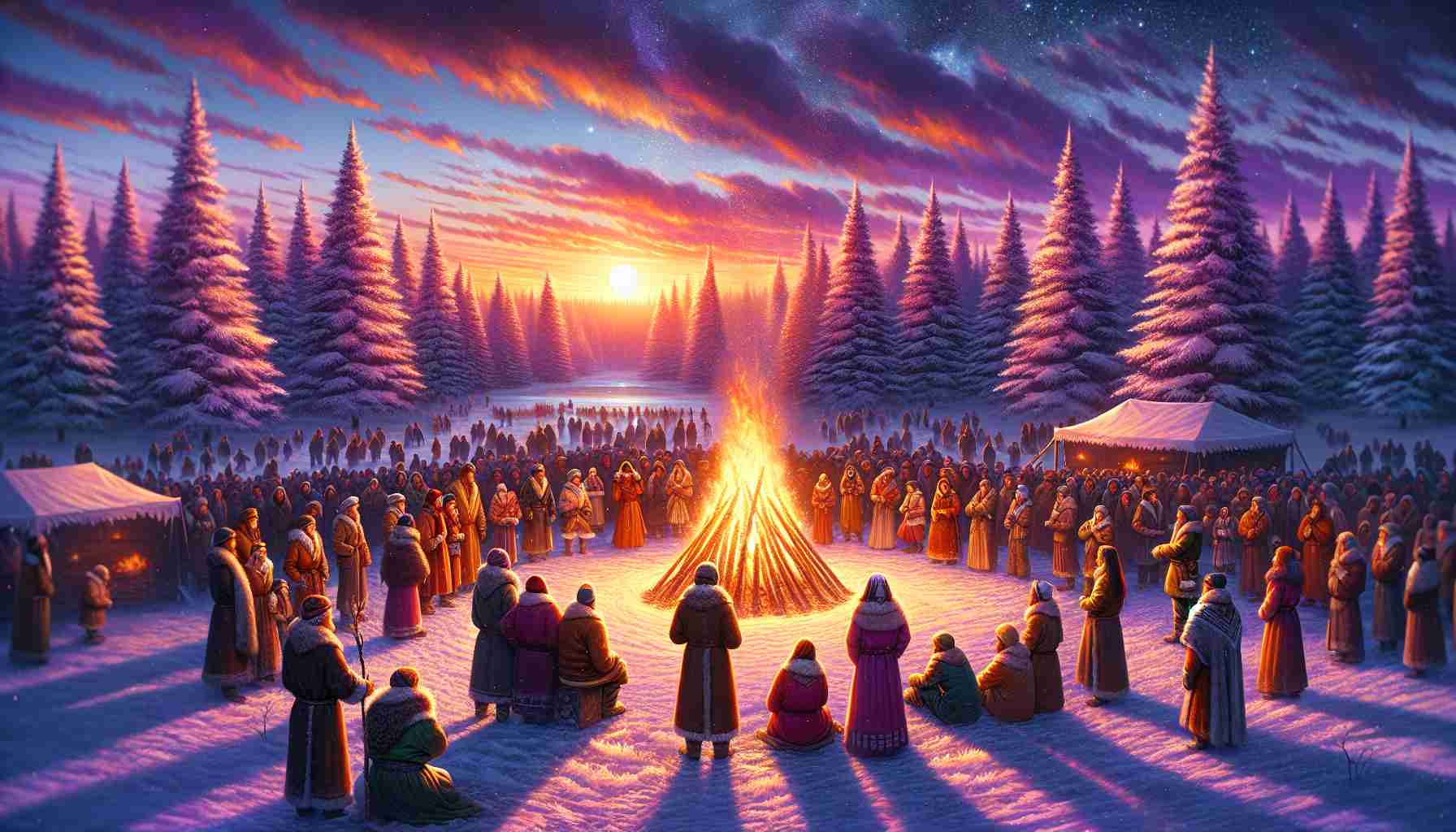Today marks a significant celestial event. As the shortest day and longest night, the winter solstice holds deep cultural meaning for many in the northern hemisphere. This ancient phenomenon, celebrated across various cultures for millennia, marks the beginning of the Yule festival, a time steeped in tradition and reverence for the return of sunlight.
Across the globe, communities engage in diverse festivities that honor this turning point in the year. Originating from early Germanic practices, many modern holiday customs, such as adorning Christmas trees and hanging wreaths on doors, can be traced back to these ancient solstice celebrations. The event symbolizes hope and renewal, bringing warmth and light back into the world after the darkest days of winter.
One of the most iconic locations for winter solstice celebrations is Stonehenge, where many gather to witness the sunrise and connect with the earth’s rhythms. However, events honoring the solstice can be found in numerous countries, each with its unique interpretation and traditions.
From candle-lit rituals to joyous feasts, the winter solstice invites everyone to reflect on the balance of light and dark in their lives. Join in the global festivities as we celebrate the promise of longer days ahead. Stay tuned for updates and insights into how cultures around the world observe this enchanting day.
Embrace the Light: Discovering the Rich Traditions of the Winter Solstice
Understanding the Winter Solstice
The winter solstice, occurring around December 21st in the Northern Hemisphere, marks the shortest day and the longest night of the year. This pivotal astronomical event has not only scientific significance but also cultural, spiritual, and historical importance across various civilizations.
Celebratory Customs Around the World
Cultural Significance
The winter solstice has been celebrated for thousands of years. Indigenous groups and ancient civilizations such as the Celts, Romans, and Native Americans incorporated solstice traditions into their customs, often with rituals that symbolize rebirth, fertility, and hope. The return of longer days is a message of rejuvenation, heralding the gradual return of light.
Notable Celebrations
– Stonehenge: A significant gathering spot in the UK where druids and visitors come together to witness the sunrise, celebrating the alignment of the stones with the sun’s path.
– Yule: Rooted in Germanic pagan traditions, Yule has influenced many modern Christmas customs. Celebrations often include feasting, Yule logs, and the decorating of trees symbolizing life amid winter’s chill.
– Inti Raymi: In the southern hemisphere, particularly in Peru, the Inca festival recognizes the sun god with colorful parades and offerings.
How to Celebrate the Winter Solstice
1. Host a Solstice Feast: Prepare traditional foods and gather friends and family to celebrate. Incorporate seasonal ingredients like root vegetables and winter fruits.
2. Create a Home Altar: Decorate with candles, greenery, and other symbols of winter and light, like crystals and images representing the sun.
3. Reflect and Meditate: Use this time to journal your thoughts on the past year and set intentions for the coming months as the light returns.
4. Engage in Nature: Spend time outdoors, observing the natural changes in your environment. Go for a hike or simply enjoy a moment of quiet reflection.
Pros and Cons of Winter Solstice Celebrations
Pros
– Cultural Awareness: Participating in or learning about solstice celebrations can foster deeper cultural appreciation and understanding.
– Connection with Nature: Engaging in outdoor activities during the solstice promotes a stronger bond with the natural world.
– Mental Well-being: Festivities encourage community bonding and can help combat the winter blues.
Cons
– Commercialization: Like many traditional celebrations, winter solstice events can sometimes be overshadowed by commercialization, losing their essential meaning.
– Weather Disruptions: In some regions, harsh winter weather can limit outdoor celebrations.
Insights and Trends: Winter Solstice in Modern Society
With the increasing interest in sustainability and eco-conscious living, many people are returning to traditional solstice rituals that honor nature and the changing of the seasons. This trend reflects a broader cultural shift toward mindfulness and reconnecting with ancient practices that promote environmental harmony.
Conclusion
The winter solstice serves as a reminder of the cycles of nature and the promise of renewal. Whether through ancient rituals or modern celebrations, people around the world find joy in welcoming the return of the light. This rich tapestry of traditions offers anyone the opportunity to find their own way to honor this beautiful celestial event.
For more on various cultural celebrations and festivities, check out History.com.














